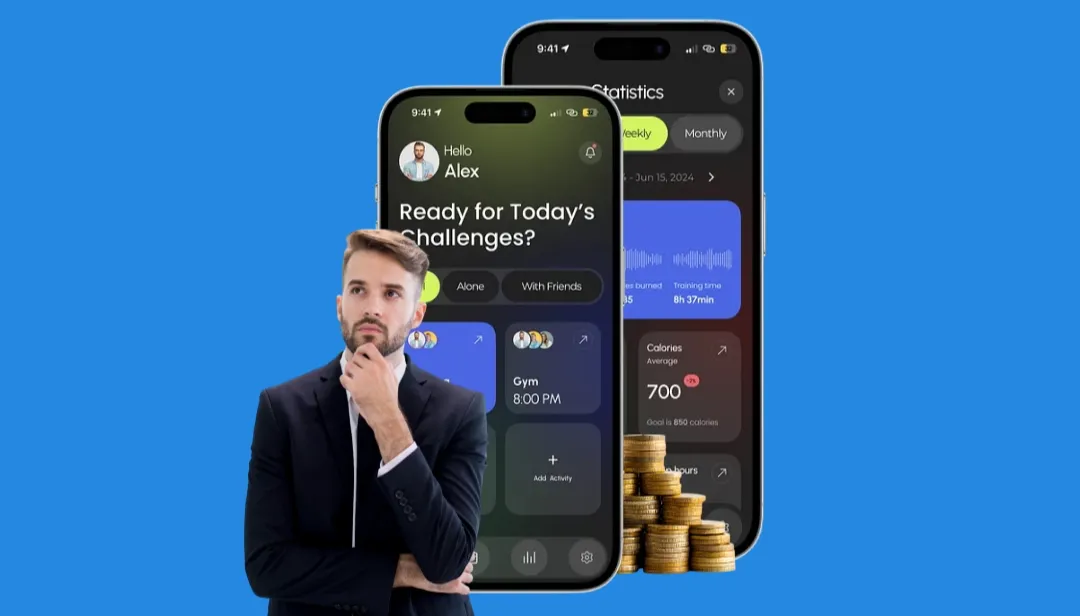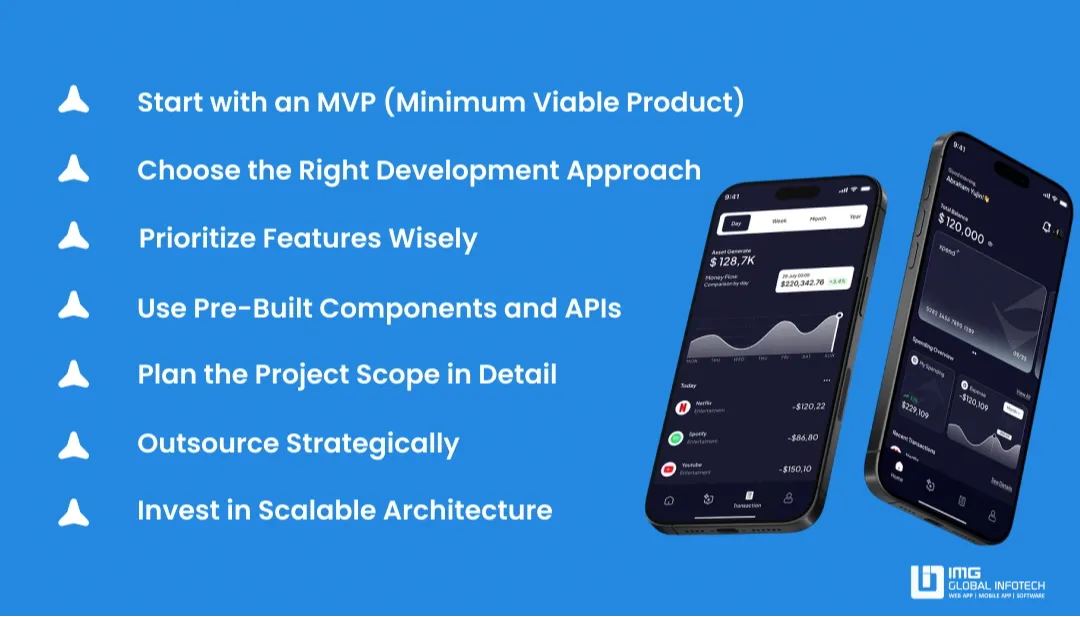How Much Does Mobile App Development Cost In Australia?
Mohit Mittal
Jul 29, 2025

Australia’s mobile app market is booming, with businesses of all sizes leveraging apps to connect with customers and stay ahead of the competition. From startups in Sydney to enterprises in Melbourne, companies are investing in mobile app development to enhance customer engagement, streamline operations, and boost revenue. But one of the first questions that comes to mind is: How much does mobile app development cost in Australia?
The truth is, there’s no fixed answer. The cost of building an app in Australia depends on several factors, such as the complexity of the app, the chosen platform (iOS, Android, or cross-platform), the design, and the level of functionality required. Whether you’re developing a simple booking app or a feature-rich eCommerce platform, understanding the average app development cost in Australia can help you plan your budget more effectively.
In this blog, we’ll break down all the factors that influence mobile app development cost, explore average development rates in different Australian cities, and provide insights to help you make cost-efficient decisions for your next mobile project.
Factors Influencing Mobile App Development Cost in Australia
The cost of app development in Australia doesn’t have a fixed price tag. Instead, it varies based on multiple elements that determine the app’s complexity, design, features, and overall development approach. Understanding these factors will help you estimate a realistic budget and avoid unexpected expenses during the process.
Let’s break down the main cost-driving factors in detail:
1. Type and Complexity of the App
The app’s complexity level is the most significant cost determinant.
-
Simple Apps – These are basic apps with limited features, such as a company information app, basic calculators, or apps with static content. They require minimal backend support and are the most budget-friendly.
-
Medium-Complex Apps – These include more functionality such as payment gateways, push notifications, geolocation tracking, and user dashboards. A restaurant ordering app development or a fitness tracking app development can fall under this category.
-
Complex Apps – High-end applications with advanced features like AI-powered recommendations, AR/VR functionality, real-time chat, video streaming, or marketplace integrations can significantly raise the development cost. For example, building an app like Uber or Airbnb app development in Australia would require substantial investment.
2. Platform Choice: iOS, Android, or Cross-Platform
Choosing the right platform also impacts app development cost.
-
Native Apps – Building separate apps for iOS and Android ensures the best performance but costs more because each platform requires its own codebase.
-
Cross-Platform Apps – Cross-platform development frameworks like Flutter or React Native allow you to create a single codebase that runs on both platforms, helping you save on development time and costs.
The choice depends on your target audience, for example, a luxury service app may prioritize iOS due to Apple’s market share in premium segments, while a mass-market app may opt for Android or both.
3. Features and Functionalities
Every additional feature increases the app development time and budget.
-
Standard Features – Login/signup, profile management, push notifications, and search functionalities are common in most apps and form the base cost.
-
Advanced Features – Payment integration, AI chatbots, real-time tracking, multi-language support, and social media integration require extra effort and raise costs.
Example: A ride-hailing app needs GPS tracking, payment gateways, and real-time driver updates, all of which significantly add to the budget compared to a simple informational app.
4. UI/UX Design Quality
A well-designed app can improve user engagement and brand perception but comes at a cost.
-
Basic UI – Uses standard design templates and minimal customization.
-
Advanced UI – Includes custom layouts, animations, micro-interactions, and tailored branding for a unique user experience.
In Australia, brands that want to stand out in competitive markets (like eCommerce, health, or finance) often invest more in high-quality UI/UX to improve customer retention.
5. Backend Infrastructure & API Integrations
The backend powers the app’s functionality behind the scenes.
-
Basic Backend – Apps with minimal user interaction or no real-time updates need only lightweight backend support.
-
Advanced Backend – Apps like food delivery or fintech platforms need robust cloud servers, data encryption, user authentication, and scalable databases.
Additionally, integrating third-party APIs (payment systems, maps, social logins, or shipping services) can add both complexity and cost to develop an app Australia.
6. Security & Compliance Requirements
For apps handling sensitive information (banking, healthcare, eCommerce), security is critical.
-
Implementing data encryption, secure payment gateways, biometric logins, and compliance with Australian privacy laws, GDPR, or HIPAA increases the budget.
Example: A healthcare app in Sydney must comply with strict Australian Health Privacy Principles, which require additional development work.
7. Development Team Size & Expertise
The skills and location of the dedicated development team for hire directly influence the cost.
-
Freelancers – Can be more affordable but may lack the depth and speed of larger teams.
-
Local Australian App Development Companies – Offer experienced developers, project managers, designers, and QA testers, ensuring quality and timely delivery, but charge higher hourly rates (often $80–$150/hour).
-
Outsourcing to Offshore Teams – Reduces cost but requires strong communication and project management to maintain quality standards.
Average Mobile App Development Cost in Australia
The cost of mobile app development in Australia largely depends on the complexity of the project. A basic app with simple features like user login, static content, and limited integrations can be developed for as little as $20,000–$40,000. Mid-range apps that include functionalities such as payment gateways, push notifications, geolocation, and API integrations generally fall between $30,000–$50,000. On the higher end, complex or enterprise-level apps, such as on-demand platforms, fintech solutions, or AI-powered marketplaces, can easily exceed $800,000, sometimes reaching $100,000 or more. Understanding these cost ranges helps businesses choose the right mobile app development company and allocate their budget effectively.
Tips to Optimize App Development Cost In Australia

Building a mobile app in Australia can be a significant investment, but with the right approach, businesses can manage their budgets effectively without compromising on quality. Here are some practical tips to reduce app development costs while still achieving a high-performing product:
1. Start with an MVP (Minimum Viable Product)
Instead of launching a full-featured app from day one, begin with an MVP that includes only the essential features. This allows you to test the market, gather user feedback, and refine your app before investing heavily in advanced functionalities.
2. Choose the Right Development Approach
Selecting between native and cross-platform development can have a big impact on costs.
-
Native development (separate apps for iOS and Android) ensures high performance but increases expenses.
-
Cross-platform frameworks like Flutter or React Native help reduce costs by creating a single codebase for multiple platforms.
3. Prioritize Features Wisely
Focus on must-have features in the initial release and leave non-essential or “nice-to-have” features for later updates. This staged approach helps control upfront costs and avoids scope creep.
4. Use Pre-Built Components and APIs
Instead of building every feature from scratch, use ready-to-integrate APIs, SDKs, and third-party services for functions like payment gateways, chat systems, analytics, and maps. This saves time and development effort.
5. Plan the Project Scope in Detail
Clear documentation and a well-defined project roadmap reduce the chances of costly changes during development. Frequent modifications or unclear requirements are common reasons for budget overruns.
6. Outsource Strategically
Hiring a local Australian team can deliver premium quality but at higher hourly rates. For cost efficiency, many businesses opt for offshore or hybrid development models, where certain parts of the project are handled by skilled remote teams.
7. Invest in Scalable Architecture
Choosing a scalable app architecture from the start prevents costly rebuilds later. Planning for future growth ensures that when new features or user loads are added, the app can handle them without expensive redevelopment.
Why to Invest More in Mobile App Development in Australia?
While it’s tempting to keep app development costs as low as possible, in many cases, investing more upfront can lead to better performance, higher returns, and long-term savings. For businesses in Australia, where the mobile app market is competitive and user expectations are high, spending more strategically can make the difference between a successful app and one that fails to gain traction.
1. Quality Leads to Better User Experience
Australian users expect apps that are fast, responsive, and visually appealing. A higher investment in UI/UX design, smooth navigation, and bug-free functionality ensures that your app not only attracts users but also keeps them engaged.
2. Competitive Edge in Crowded Markets
Industries like food delivery, eCommerce, finance, and travel are saturated with apps. By investing more in custom features, advanced integrations, and unique branding, your app can stand out from competitors and capture market share.
3. Scalability for Future Growth
Cutting costs early might mean rebuilding the app later. By investing in scalable architecture, robust backend systems, and flexible technology stacks, your app can handle growth in users, features, and traffic without expensive redevelopment.
4. Stronger Security & Compliance
With strict Australian data privacy laws and increasing cyber threats, security is a top priority. Spending more on encryption, secure APIs, and compliance measures ensures that sensitive data is protected, especially for apps in finance, healthcare, and enterprise sectors.
5. Long-Term Cost Efficiency
While a cheap app may save money initially, it often leads to higher maintenance costs, poor performance, and user drop-offs. A well-developed app reduces frequent bug fixes, redesigns, and costly updates in the future.
Conclusion
The mobile app development cost in Australia can vary greatly depending on the app’s complexity, features, design, platform choice, and the expertise of the mobile app developers for hire. A simple app may start from around $20,000, while more complex, enterprise-level solutions can exceed $80,000+.
The key to a successful and cost-effective app lies in clear planning, smart feature prioritization, and choosing the right development approach and app development companies in Australia. Whether you’re a startup launching your first product or an enterprise building a scalable solution, understanding the cost factors will help you create a realistic budget and avoid unexpected expenses.
By viewing mobile app development as a long-term investment, focusing on quality, user experience, and scalability, you can ensure your app delivers lasting value and strong returns in the competitive Australian market.
Mohit Mittal is the co-founder of a leading IT company with over a decade of experience in driving digital transformation and innovative tech solutions. With a strong background in software development, Mobile app development, E-commerce, business strategy, and team leadership, Mohit Mittal is passionate about helping businesses scale through technology. When not solving complex tech challenges, he enjoys sharing insights on emerging trends, entrepreneurship, and the future of IT.












